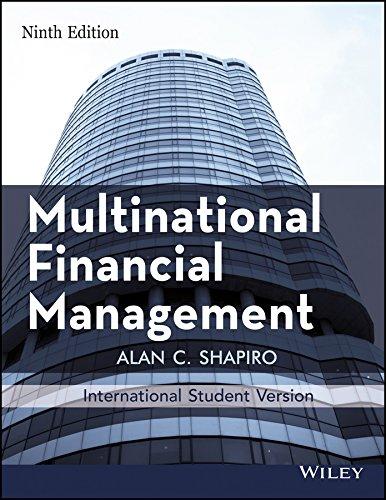Question
The GFA Company, originally established 16 years ago to make football, is now a leading producer of tennis balls, baseballs, footballs, and golf balls. Nine
The GFA Company, originally established 16 years ago to make football, is now a leading producer of tennis balls, baseballs, footballs, and golf balls. Nine years ago, the company introduced High Flite, its first line of high-performance golf balls. GFA management has sought opportunities in whatever businesses seem to have some potential for cash flow. Recently Mr. Dawadawa, vice president of the GFA Company, identified another segment of the sports ball market that looked promising and that he felt was not adequately served by larger manufacturers. As a result, the GFA Company investigated the marketing potential of brightly coloured bowling balls. GFA sent a questionnaire to consumers in three markets: Accra, Kumasi, and Koforidua. The results of the three questionnaires were much better than expected and supported the conclusion that the brightly coloured bowling balls could achieve a 10 to 15 percent share of the market. Of course, some people at GFA complained about the cost of test marketing, which was GH 250,000. Also, the feasibility test carried out by analysts to assess the viability of the project cost GH 100,000. In any case, the GFA Company is now considering investing in a machine to produce bowling balls. The bowling balls would be manufactured in a building owned by the firm and located near Madina. This vacant building and the land can be sold for GH 150,000 after taxes. Working with his staff, Dawadawa is preparing an analysis of the proposed new product. He summarizes his assumptions as follows: The cost of the bowling ball machine is GH100,000 and it is expected to last five years. At the end of five years, the machine will be sold at a price estimated to be GH 30,000. The machine is depreciated on straight-line basis. The company is exempt from capital gains tax. Production by year during the five-year life of the machine is expected to be as follows: 5,000 units, 8,000 units, 12,000 units, 10,000 units, and 6,000 units. The price of bowling balls in the first year will be GH20. The bowling ball market is highly competitive, so Dawadawa believes that the price of bowling balls will increase at only 2 percent per year, as compared to the anticipated general inflation rate of 5 percent. Conversely, the plastic used to produce bowling balls is rapidly becoming more expensive. Because of this, production cash outflows are expected to grow at 10 percent per year. First-year production costs will be GH10 per unit. Also, Soft Flite a substitute product, is expected to have a drop in its sales by 1000 units per annum. The selling price per unit of existing products is GH5 while the variable cost is GH 4. Dawadawa has determined, based on GFAs taxable income, that the appropriate incremental corporate tax rate in the bowling ball project is 34 percent. Like any other manufacturing firm, GFA finds that it must maintain an investment in working capital. Management determines that initial investment (at Year 0) in net working capital of GH10,000 is required. Subsequently, net working capital at the end of each year will be equal to 10 percent of sales for that year. In the final year of the project, net working capital will decline to zero as the project is wound down. In other words, the investment in working capital is to be completely recovered by the end of the projects life. GFA will finance the total investment required for the production of the balls (including working capital investment) by issuing 100,000 new common stocks at GH 2 per share from its existing shareholders. A total of GH 200,000 is expected to be raised from the rights issue. It expects to finance the remaining from a bank loan from GDB at a rate of 12%. Mr. Dawadawa has estimated the beta of the project to be 2.5 and the average return for stocks traded on the Ghana Stock Exchange to be 10% while the rate on Government of Ghana traded Treasury bills is 5%.
Step by Step Solution
There are 3 Steps involved in it
Step: 1

Get Instant Access to Expert-Tailored Solutions
See step-by-step solutions with expert insights and AI powered tools for academic success
Step: 2

Step: 3

Ace Your Homework with AI
Get the answers you need in no time with our AI-driven, step-by-step assistance
Get Started


